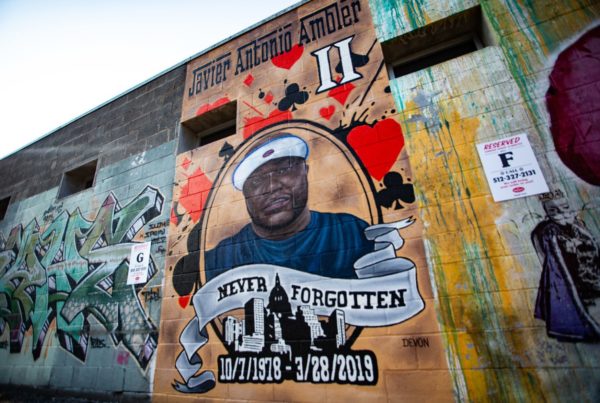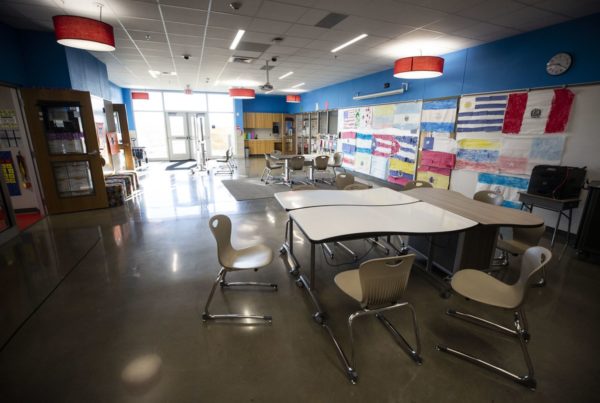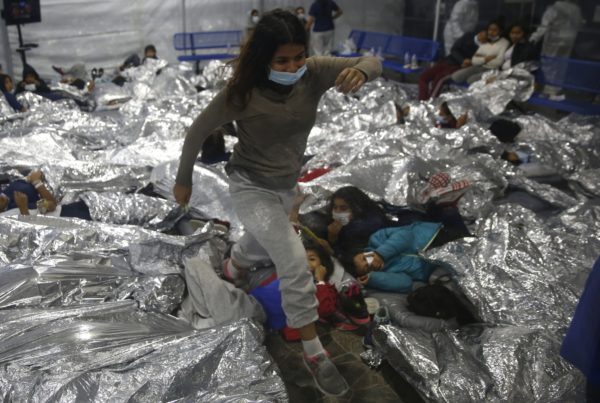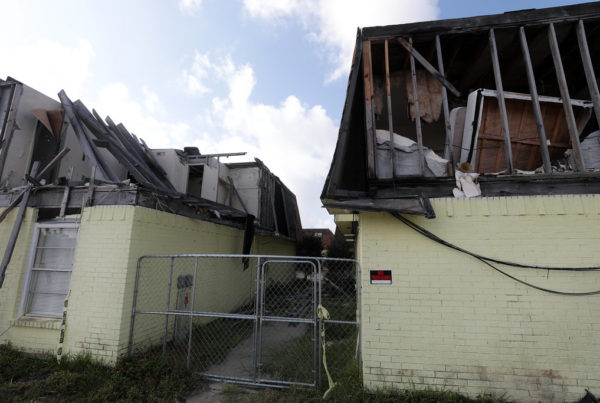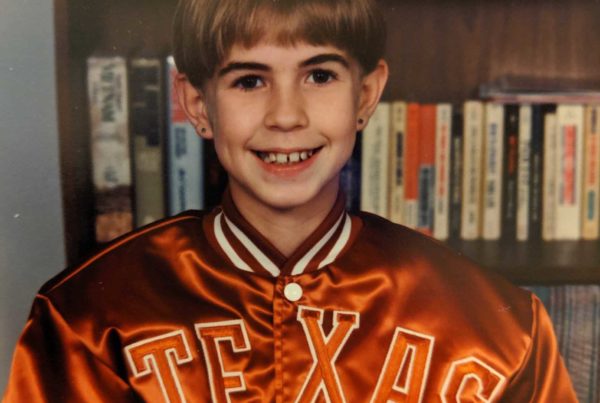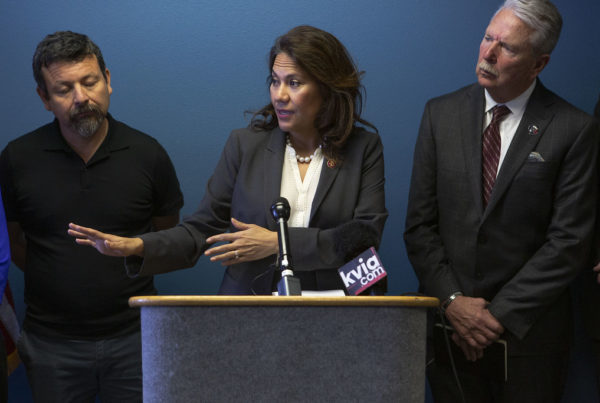From KERA:
A year ago, Lamontria Edwards came close to dropping out.
“During the pandemic I actually lost my grandfather, grandmother and my uncle,” said Edwards. “I literally just didn’t know what to do. I was panicking. I was depressed for a short period of time. It was like life was hitting me with right hooks, left and right, left and right, left and right.”
Edwards, a junior at Paul Quinn, was raised by a single mom, and was at times, homeless. Along the way, she learned to counter-punch to reach her dreams.
“I know that quitting is never an option so I had to use my inner determination and my self-discipline to keep going,” Edwards said.
She kept going by pursuing another dream — running for student president. Campaigning helped lift her depression. And she won. That helped too.
Just like Edwards, colleges everywhere had to swing into survival mode when COVID-19 started to spread.
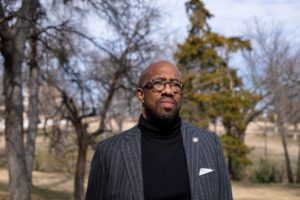
This used to be Paul Quinn’s football field. Where yard lines once painted the field, rows of vegetables are now budding.
Bill Zeeble
Survival mode is familiar territory for Michael Sorrell. Since becoming Paul Quinn’s president in 2007, he’s faced several serious challenges to the school’s existence.
“When I started the graduation rate was about 1% right? I mean, bad is bad,” Sorrell said. “And so the first thing I had to look at was how did we get there? Because you don’t get there overnight. There was a culture of acquiescence.”
Sorrell and board members booted that approach. Just getting by was not enough. They wanted excellence.
“Early on,” Sorrell said, “our slogan was greatness one step at a time because we wanted to remind ourselves that it’s incremental.”
With a step here, the occasional leap there, Paul Quinn’s graduation rates rose. After the school upped academic standards for incoming students, the percentage of those finishing went up. Paul Quinn says 13% of freshmen who started in 2009 graduated within six years. By 2013, that number jumped to 20%, according to the National Center for Education Statistics.
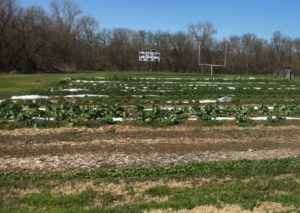
This photo of Lucia Breault-Evans was taken before the pandemic, when students were still on campus.
Bill Zeeble
Sorrell’s other challenges included flaccid finances that he managed to firm up. Facing an unaffordable sports program, he plowed up the football field and planted a community garden instead.
That’s just one change. More recently Paul Quinn’s grown a work program. Every student is employed in a paid internship, or its equivalent. The money defrays some tuition costs while simultaneously getting students needed job experience.
Then, amid these improvements — this pandemic hit. Suddenly, Sorrell needed to keep about 500 students and his employees safe, while preventing them all from running.
“We lowered the cost of attendance. We kept tuition steady. And in fact we simplified the cost structure,” Sorrell said. “We’re going to charge a technology fee, and we’re going to charge a health fee, right, because those are things that people use now. And that reduced the cost of attendance.”
Cost reductions amounted to more than $3,000 for the average student, says Maurice West, Paul Quinn’s Dean of Men who also oversees external affairs. Tuition costs of $15,795 a year on paper dropped to $11,992.
“Most institutions would probably say those fees are encumbered, you’re enrolled,” said West. “We think about the need to support our students who have limited resources. So you put a suspension in the form of their room and board. They don’t accrue those costs. When they return, you roll that back.”
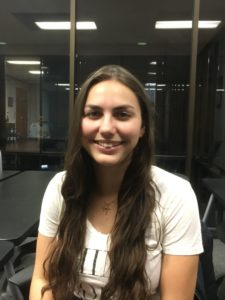
This photo of Lucia Breault-Evans was taken before the pandemic, when students were still on campus.
Bill Zeeble
Many of Paul Quinn’s students have limited resources. Almost all of them qualify for Pell grants, aimed at low-income students. After ensuring all of them would have access to technology, Paul Quinn was one of the first Texas colleges to go online full-time during the pandemic. It’ll stay that way at least through this semester.
The move made sense to third-year student Lucia Breault-Evans.
“I feel much safer and happier with how everything is laid out,” Breault-Evans said.
The pandemic forced her back home with her family in Arizona, where’s she’s fine learning online, given the circumstances.
“I wouldn’t want to be a student in COVID times at maybe a bigger university where you are required to come back and you’re just sitting in a dorm room taking classes online,” said Breault-Evans.
The move made sense to third-year student Lucia Breault-Evans.
“I feel much safer and happier with how everything is laid out,” Breault-Evans said.
The pandemic forced her back home with her family in Arizona, where’s she’s fine learning online, given the circumstances.
“I wouldn’t want to be a student in COVID times at maybe a bigger university where you are required to come back and you’re just sitting in a dorm room taking classes online,” said Breault-Evans.
For fellow student Ellie McRae, transitioning to virtual classes was easy.
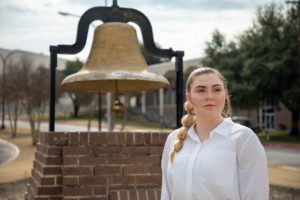
Ellie McCrae studies pre-law at Paul Quinn, she’s also on the basketball team.
Keren Carrión
“I had already been taking the majority of my classes online because Paul Quinn had already been offering online classes and hybrid classes,” McRae said.
That’s thanks in part to this school’s many years of experience with online learning. Sorrell couldn’t have known that when elements of virtual education were established at Paul Quinn, they would help the college take on a pandemic — but that’s what happened. Sorrell often preaches thoughtful preparation, so his school and students can overcome challenges such as a low graduation rate. This pandemic is just the latest snag.
“For us, this is about instilling in them resilience. There’ll be a time where we prevail. You have to be firmly committed to the inevitability to your success,” Sorrell said. “I tell my students all the time we’re not building you for the sun. We’re building you for the rain.”
Everyone hopes the pandemic storm will soon clear. Breault-Evans says when it does, she’ll be better prepared to tackle other problems, thanks to her education.
“Life still goes on,” Breault-Evans said. “You know this is something they talk about all the time at Paul Quinn — our next has to be better than our now. Seeing how our government leadership handled the pandemic, it compelled me to stay in school and graduate. More, because it’s, like, we need better leaders out there. We have to be those people.”
Breault-Evans may be years away from a diploma, but she said it feels closer now than ever.
This story is the first in a series called “Quitting Is Never An Option.” For the next few months, KERA will be exploring how Paul Quinn is fighting to keep students in school and help them graduate — in the middle of a pandemic that’s forced almost everyone off-campus.
Got a tip? Email Reporter Bill Zeeble at bzeeble@kera.org. You can follow him on Twitter @bzeeble.




